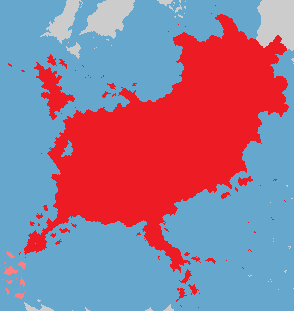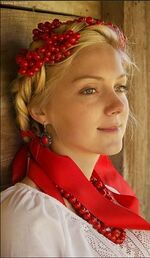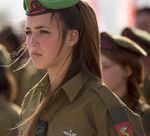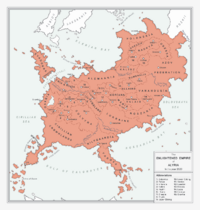Alyria
Enlightened Empire of Alyria Azovskii: Просвічена Імперія Алирія(Prosvichena Imperiya Alyrii) Alemannian: Erleuchtetes Imperium Alyrien Polenskii: Oświecone Cesarstwo Alyrii Lorran: L'Empire éclairé d'Alyrie Roszarian: Impero Illuminato di Alyria Varosii: Imperio Iluminado de Alyria | |
|---|---|
| Motto: Shall Our Fire Never Die And Burn Brighter Than Ever | |
| Anthem: Long Live the Beloved Empire | |
 | |
| Capital | Highrose |
| Largest city | Vabella |
| Official languages | Alyric |
| Recognised regional languages | Alemannian Roszarian Lorran Polenskii Azovskii Varosii |
| Ethnic groups | 17% Cirillian 10% Culvyran 14% Lorran 11% Alemannian 8% Varosii 7% Evadorii 8% Polenskii 6% Rivian 8% Azovan 7% Roszarian 1% Lysaarite 3% Other |
| Religion | No Official Religion Predominantly Altriism |
| Demonym(s) | Alyrian |
| Government | Absolute Hegemonic Imperial Monarchy |
• Emperor | Leonardo Valentyn Rosenwen |
• Imperial Crown Prince | Lance Belmont Rosenwen |
| Legislature | Imperial Monarch & Imperial Council of Nobility |
| Establishment | |
• Old Alyria | ??? BCE - ??? BCE |
• Nilfgaardian Empire | 540 A.D - 1016 A.D |
• Cirillian Empire | 1016 A.D - 1604 A.D |
• Alyrian Empire | 1604 A.D - Present |
| Area | |
• Total | 12,434,900 km2 (4,801,100 sq mi) |
| Population | |
• 2017 estimate | 547,896,410 |
• Density | 44/km2 (114.0/sq mi) |
| GDP (PPP) | 2016 estimate |
• Total | $ 31.40 Trillion |
• Per capita | $ 57,310 |
| GDP (nominal) | 2016 estimate |
• Total | $ 30.03 Trillion |
• Per capita | $ 54,810 |
| Gini | 32.9 medium |
| HDI | .916 very high |
| Currency | Rose (℣) |
| Date format | mm.dd.yyyy |
| Driving side | right |
| Calling code | +414 |
| Internet TLD | .aly |
The Enlightened Empire of Alyria, or commonly called the Alyrian Empire or Alyria, is a Absolute Hegemonic Imperial Monarchy or Absolute Monarchy for simplicity, where it's states and dominions are ruled by smaller monarchs or nobles. Monarchs can be defined to hereditary royal rulers of a specific land that had gained the right to rule over them long ago while nobles are defined to be nobility or ordinary citizens that had gained sufficient political power within republics or non-dynastic states within the Alyrian Empire. It is bordered on the north by Rovryssia while it the rest of it's borders are surrounded by water. Alyria covers 12,434,900 square kilometers and has an estimated population of 547 million, making it one of the largest nations in the world overall. Ruler of Alyria, His Imperial and Royal Majesty, Emperor of the Alyrian Empire and it's holdings, Suzerain of Alemannia, Azovskiia, Evadorra, Pomerelia, and lastly Polenskiia; High King of Cirilla; King of Nilfgaardia, Kaedwen, Lyria & Rivia; Archduke of Culvyra and Cintra; Duke of Aeden, Istriia, Koviir and Eingaard, Heir to Lorraine, Oskriia, Vanarella and Varosa, Guardian of the Isles of Dawn, Blood of Old Alyria, Leonardo Valentyn Rosenwen of House Rosenwen.
Alyria is a great power while arguably defined to be one of the global superpowers in Aenscira. It competes with the other global powers within the world, wishing to project its influence to the entire world and proudly call itself a hyperpower. It tries to solve regional problems diplomatically, though not afraid to return to its former imperialistic solutions. The nation mostly tries to stay isolated and neutral in international affairs not concerning them, but sometimes likes to flex it's muscles to show its not to be messed with. In reality, it is most likely a superpower within Aenscira noting all the land and resources it possesses.
The political ideology it currently follows is left-leaning centrism, however generally the empire practices Realpolitik or pragmatism. Due to it's nature of still procuring an monarchical government with an empire-structure, it is isolated from the world.
Etymology
The word "Alyria" is the modernization of the ancient Alyric name, meaning "Land of the Gods" or "Land of the Enlightened". It's a rough translation from Ancient Alyric, an old language derived from the Aen Elven proto-languages.
The standard way to refer to a citizen of the Cirillian Empire/Alyria is "Alyrian". It's pronounced as "A-Leer-Ree-Uhn".
History
Most of the territory the Enlightened Empire currently holds was formerly administered by an ancient Culvyran empire that was once called, Alyria. The Old Alyrian Empire held dominion over vast areas across the continent of Csicara and even stretched to the Fmera and Esaarah continents by some accounts. The old empire’s roots can be traced to Aen dominance on the continent several thousand years before their formation. For millenniums their rule shaped and mold the culture and society in the countries that would later reside in their former territories. In Ancient Alyria the natives who ruled over the empire mostly spoke Alyric, a language derived from the Aen Elvens, which would later branch out to become Elerian, Roszerian and Yuriscian languages in surrounding regions. Old Alyria’s decadence brought birth to new dominance of nations such as the Nilfgaardian, Roszerian, Velenese empires; Kingdoms of Lancaster, Lyria & Rivia, Varosa; Genyreea’s and Azov’s collective realms - as well as many other historical powers. The imperial emergence of Roszeria in present-day Milrania created common romance/latin features that would give rise to certain regions such as Azorelia, Camillia, Hymera, Irisca, Lorraine, Lyon, Milrania, Vanahousia and Varosa. Shortly the fall of the Roszerian empire, Nilfgaard took the stead of becoming the dominating force, even holding control over Culvyra which was the heartland of Old Alyria. The Nilfgaardian Empire’s peak of power, with the successful invasion of Ebbing, Lyria & Rivia, brought concern to island kingdom of Lancaster and the Genyreean states northeast. Velen also began to gain reputation by exerting their military and metallurgy expertise across the northern lands, invading their neighbors and expressing a harsh autocratic rule. With Nilfgaard slowing creeping upward and Velen growing at an excessive rate, the of idea forming a confederacy between Genyreean states was quite appealing for some. These looming threats birthed the Elective Monarchy of Genyreea, although it did not comprise all Genyreeans it was enough to fight against the Nilfgaardian and Velenetian empires. Genyreea then strategically allied with Lancaster, together they repelled against Nilfgaard’s advancements. Cirilla, Culvyra, Milrania and Varosa became prominent by being trade centers. Later on as Nilfgaard slowly fell Cirilla rose to the center of attention. Through entangled alliances and military successes Alyria would once again mostly be united under one banner, though now the heart of the reborned empire resides in the Cirillian Crownland. With the Alyrian Empire brought back to life, reforms made by the imperial government would slowly bring it’s people closer together.
Age of the Roszerian Empire(410 BCE-388 CE)
In 490 BCE, Roszeria grew from an ancient Alyric outpost of Roszem or located in present-day Milan. After several decades Roszeria later became an empire by absorbing nearby states into its dominion. It’s rulers sought their empire to be prestigious and idolized as their famed, respected ancestor of Old Alyria. The Roszerian Empire did achieve in attaining large territories and amass colonies in eastern Csicara and northern Esaarah. For centuries it went unchallenged as a major power, nurturing it’s own culture and language that was distinct from Old Alyria. The age of which it’s dominance brought peace can namely be coined as Pax Roszeria. As the empire was still captivated of it’s own predecessor, Roszeria had revived many old traditions from Old Alyria that can still be seen today. Although peace brought by the Roszerian Empire was not eternal as controlling distant colonies in eastern Csicara grew troublesome with foreign tribes constantly draining resources. This was not the only problem that Roszeria had to deal with Solovkii, a kingdom in present-day Azov, attacked the empire from the north. Their successful invasions had caused the Roszerian Empire to cede Vanahousia to Solovkii. This later resulted in years of wars, trying to recover the lost northern lands. In order to sustain the losses and drains of the empire, Roszeria split into two different governing bodies while still a single entity in spirit it was no longer identified as single power it was once was. Varosa then ceded away from Roszeria as the army located their had revolted and declared a kingdom independent from the empire. Slowly the empire based in Milan decayed into nothing while the one based in modern-day Irisca grew into fruition. In 388 CE, Solovkii had made their final push into the heartland of Roszeria which ultimately discontinued the central imperial government and birthed nations such as Nilfgaard and Lorraine. A member of the imperial Roszerian dynasty had fled south of the Alba river to the city of Nilfgaard than overseas to the other part of the empire, hoping to rebuild the empire their dynasty was from.
Second Medieval Period(388 CE-???)
After the collapse of the Roszerian Empire, large parts of the region had went into war and turmoil strife once again. Various nationstates are birthed or cease to exist as a result of this second medieval period. The first age of primitive development was stressed after the fall of Old Alyria. Now once again an era of eternal warfare plagued the former region owned by the ancient empire, with disease and high death rates were common as well. Cirillic cities in the southwestern part of the continental peninsula had flourished due to the trade from foreigners across the Isles of Dawn, this sustainability had caused them to be knowledge beacons of ancient empires that once ruled the continent. Few foreigners hailed from empires that seemingly controlled the Isles of Dawn, sacred islands in Altriism. Altriism was the widespread religion in Old Alyria and was still prevalent in vast areas of the continent although now it’s holy land was occupied by foreign powers who cared little for the ancient religion.
The Cirillian Commonwealth(364 CE-602 CE)
Cirillic nobility that inhabited the southwest had banded together to form the Cirillian Commonwealth, a Nobles' Democracy inspired by the city-states in Myrceia. With the idea of having a single nation under one banner grew into existence with a national council as the head of the government. Similar to it’s predecessor of Old Alyria, the Commonwealth had gained control over the Isles of Dawn and protected the sagacity it withheld within it. The Cirillian Commonwealth was an trade hub for the known world, revered to be a time-stamp when old empires had ruled and brought peace to the continent. This caused religious scholars from former imperial lands to migrate to the Commonwealth to pool in knowledge of the classical past. With the wealth and trade of the sanctuary cities, the most western part of the country, it brought prosperity. With a navy to protect the Isles of Dawn, the commonwealth began to their eastward land borders. They formed a special military regiment called the Winged Cavalry, a group of nobleman who fought mounted on horseback, that would be the antecedent of the Myrviicsii. It is even credited to the Myrviicsii that their allowance of having noblewomen to their regiment would be one of the first signs of women in historical militaries. For a small period, Cirilla would be seen as the last light of nostalgia for the sophistication of past empires.
The Cirillian Kingdom(602 CE-1016 CE)
Lord Giiradyn overthrew the commonwealth and instituted a single kingdom. The head of each noble house was a councilmen within the Commonwealth. Giiradyn was the head of by far the largest house, House Maar, and levied a large amount of soldiers. Although House Maar was considered to be the largest and strongest, it was House Issouvyr that was quite respected and most influential among the people and nobles. Throughout the previous years, Lord Giiradyn had coerced, intimidated, bribed and even murdered other nobles to gain even greater power. All of this did not go unnoticed as two defining sides formed within the council between House Issouvyr and House Maar. Lord Olivaar powerhoused a decree that created the Myrviicsii as an act against Giiradyn’s rising power. Each and every noble part of the Myrviicsii vowed to relinquish their ties to their houses swore to fight for the Crownlands(Cirilla) as a whole. This was perhaps the first time Cirilla had its own standing army. Giiradyn did not take this likely as this decreased his military influence. After he assassinated Olivaar, Giiradyn banished the Myrviicsii from Cirilla. Internal strife and the lack of support of the government had caused scholars to flea. The Myrviicsii’s goal was to bring back the prosperity that once spanned across Cirilla. Although they did not achieve this until in 649 C.E. With the help of Nilfgaard, a looming imperial power, they successfully overthrew House Maar. Rosalyn Arcelia Issouvyr, the niece of Nilfgaardian Emperor Lucsairys IV, was proclaimed as the High Queen of Cirilla. In exchange for help the Myrviicsii agreed in integrating Cirilla into the Nilfgaardian Empire as an autonomous state, starting the Allaire-Issouvyr dynasty which would last to present-day.
Queen Rosalyn was also heir to the Nilfgaardian throne which thus later allowed her to control the empire itself. Her blood was rooted from a former Cirillian noble house that still existed due to the Myrviicsii, which gave her the prestige to proclaim the Cirillian throne. Queen Rosalyn was also descendent of an ancient house from Old Alyria and Roszeria, by being apart of the Imperial House Allaire in Nilfgaard due to her mother, Princess Mariin of Nilfgaard, which had given her more influence across the realms. To win the support of the people, her administration focused on the state, improving buildings, palaces, businesses and order for the people. The peasantry accepted their new ruler with ease, in gratitude and hope for a better monarch than their previous one. In control of the Nilfgaardian Empire she ruled benevolently and progressively becoming an precursor to the enlightened monarchs in history and offsetting the Nilfgaardian Ascendancy and the Restoration of Alyria.
Nilfgaard's Ascendancy(540 CE- CE)
As Emperor Lucsairys IV had past, Rosalyn had inherited the throne becoming the Empress of Nilfgaard. Her priorities for Cirilla and the Empire were split as she wanted to preserve Cirilla in peace although the Nilfgaardian bureaucracy had urged her to increase the power of the empire. In order to appease the Nilfgaardian aristocrats, Rosalyn had set forth to Culvyra, the former heartland of Old Alyria, to establish a political marriage. The Culvyran Archduchy and Nilfgaardian Empire saw this as a way to increase their power in the Alyrian realm. This vastly decreased Nilfgaard’s opposition to their rise in power. Empress Rosalyn had also implemented social reforms to better the society she ruled over. This was later known as Chivalry, which began to be widespread across the empire and even to neighboring states. Culture flourished and the literacy increased within the Empire, many scholars had seen this as the rebirth of classical thought or a new golden age. Nilfgaard would experience population growth, cultural assimilation, and unity. Empress Rosalyn bared two heirs, one of which ruled Culvyra in their sibling’s stead while the other tended the needs of the empire. Archduke Ralnor of Culvyra married the princess of Oskriia, eliminating any trouble from the kingdom for the Empire’s northern ambitions while also creating a complicated web of relatives for the Allaire-Issouvyr dynasty. The dynasty now not only had ties in Nilfgaard and Cirilla but also Culvyra and Oskriia. Nilfgaard soon launched a series of imperial campaigns against the northern states, causing several successions of conflicts called the Northern Wars. Through the use of imperial agents, the Empire had made the northern states go to war between each other. As they were weakened by wars instigated by Nilfgaard, the Empire used the opportunity to annex these minor kingdoms, principalities and duchies. After several decades of military incursions and cunning political maneuvers, Nilfgaard had succeeded in attaining prestige and influence across the Alyrian Realm. Gaining the Kingdom of Lyria & Rivia had brought large concern to Lancaster, an island kingdom north of Lyria & Rivia, and to the minor Genyreean kingdoms eastward.
In 860 CE after the successful invasion of Upper and Lower Ebbing, the Nilfgaardian Empire had begun its military incursion into Genyreea. This would be the start the 1st Genyreean War, where minor Genyreean states would form a Genyreean confederation. In response to the Nilfgaardian and Velenetian threat, the Kingdom of Augsburg had urged it's neighbors to create the Genyreean Confederation where the head of state would be voted upon by its member-states and command a combined military of all its members. It was one of the first concepts of ethnic nationalism in history, as the Augsburger king had tried to delegate a majority of Genyreean-speaking states to join a unified state. Even though the king failed to convince most of his fellow nobility he was succeeded in creating the Elective Monarchy of Genyreea. The first few battles between Nilfgaard and the new confederation resulted in the victory of the Elective Monarchy in the 1st Genyreean War. The victory had given the confederation enough prestige to persuade other minor states to join as the imperial powers seemed to loom closer to them. The 2nd Genyreean War was not started by Nilfgaard, but by Velen. Yet again the combined forces of the Confederation succeeded in defending off the imperial forces however with heavy losses. Nilfgaard launches yet another invasion two year laters in 865 CE and succeeds, resulting in the occupation of several member-states of the Elective Monarchy for decades. The Confederation simply did not have the manpower to fight both empires. The Velenetian Empire, seeing this as an opportunity, invades western Genyreea which it now neighbored the Nilfgaardians. Velenetians’ aggressive nature did not stop at Nilfgaard, ultimately leading them both to war in 871 CE. The Velenetians faced mass defeat against the Nilfgaardians, ceasing their western Genyreean territories. With Nilfgaard’s forces thinned through several successions of war, it faced problems in administering their far-flung northern territories while Lancaster had seemed to be their growing thorn.
Era of the Cirillian Empire
Ascension of Alyria
Modern Period
Industrialization
World War I & II
Cold War Era
Contemporary History
Geography
The land area of the Alyrian Empire is 12,434,900 square kilometers (4,801,142 sq mi), which excludes the Isles of Dawn and any other extraterritorial land mass. Alyria is the world's second largest nation by total area, ranking behind Rovryssia.
Demographics
Age Structure
| Age Group | Percentage of Population | Male | Female |
|---|---|---|---|
| 0-13 Years | 14% | 38,051,584 | 38,653,914 |
| 14-18 Years | 16% | 43,448,541 | 44,214,884 |
| 19-52 Years | 52% | 142,000,250 | 142,905,884 |
| 53 & Over Years | 18% | 48,448,541 | 50,172,812 |
| Total | 100% | 271,948,916 | 275,947,494 |
Language
There are many unique languages that exist in Alyria, Alyric English is the only official language where it is required to be taught and learnt within the realm. Any immigrants, not tourists, that wish to move here are also required to learn the Alyric variation.
Alyric languages differ from the language they come from in that all the Alyrian languages have common words and grammar that can be understood at a basic level between all Alyric speakers. Which is why someone who speaks Genyreean can somewhat understand Lorran, though it is coped with Alyric English as a mediator anyhow. Many words are borrowed from each other, specifically in the English language as it takes many words from the regional area of Alyria.
Religion
The Imperial Alyrian Monarchy, not the Alyrian Government, is based upon Cirillian Orthodoxy, a sect of Altriism. Cirillian Orthodoxy is the most dominant religion in Alyria and is expected to be stunted from growth within the next decade. The Imperial government allows for the freedom of religion across the realm and shows support for the separation of church and state. There has been social movements in the past demanding the monarchy to strip their relations with Altriism, bringing controversy.
Roszarian/Cirillian Orthodoxy differs to Altriist Purism in a variety of aspects, such as being known to be more lax. Both sects of Altriism follow the Mariiphra, Altriist Religious Text, and recognizes the Altriist Priest Council of it's sagacity and authority. The Altriist Priest Council is mainly based in the Isles of Dawn however also does operations in Alyria and Lysaar. Cirillian Orthodoxy allows Altriism to grow by conversion and spreading the religion by common means, unlike Altriist Purism which strictly waits for a follower to be converted by "chance of fate". Altriism in it's basic sense does not require one to pray constantly or commit their lives fully to the religion, only to help understand the placement of themselves and the environmental surroundings around them, making their own philosophy influenced by Altriist teachings. Only Atriist Priests dedicate their lives to the religion and live within Altriist temples commonly referred to as "Ruins" due to their age and decadence throughout the ages. There have been major projects in helping restore and preserve these Altriist temples, even attaining the attention of the Imperial government as they have put forth a policy to protect these Ruins.
Race
Alyrian is a Latin-Germanic-Slavic ethno-linguistic group, similar to the Indo-European ethnic family though described as more tight knit. They are native to the Alyrian mainland while dispersed in outer nearby areas. Alyrians speak a composition similar to Latin-Germanic-Slavic languages. Present-day Alyric people are classified into three sub-linguistic groups; Yuriscian (Slavic-based), Elerian(Germanic-based), and Roszerian (Latin-based). Modern Alyric nations and ethnic groups are considerably diverse both genetically and culturally.
Largest Cities
Largest cities or towns in Alyria
2016 Census | |||||||||
|---|---|---|---|---|---|---|---|---|---|
| Rank | Region | Pop. | Rank | Region | Pop. | ||||
| Vabella Vabella Rivia Rivia |
1 | Vabella | Kingdom of Varosa | 10,641,582 | 11 | Evora | Preeminencey of Oskriia | 3,256,345 | Versailles Versailles Highrose Highrose |
| 2 | Rivia | Dual Monarchy of Lyria and Rivia | 7,217,234 | 12 | Palmyra | Cirillian Crownland | 3,175,256 | ||
| 3 | Versailles | Kingdom of Lorraine | 6,546,741 | 13 | Roszem | Archduchy of Roszaria | 2,965,345 | ||
| 4 | Highrose | Cirillian Crownland | 6,443,672 | 14 | Velenskii | Kingdom of Polenskiia | 2,742,643 | ||
| 5 | Musica | Archduchy of Culvyra | 5,868,375 | 15 | Ravenna | Kingdom of Vanarella | 2,534,456 | ||
| 6 | Lyria | Dual Monarchy of Lyria and Rivia | 5,374,457 | 16 | Siivyrsk | Azovan Federation | 2,337,456 | ||
| 7 | Nilfgaard | Kingdom of Nilfgaardia | 5,256,456 | 17 | Vistula | Archduchy of Pomerelia | 2,191,054 | ||
| 8 | Snowfall | Kingdom of Oskriia | 4,723,875 | 18 | Verzona | Cirillian Crownland | 1,773,345 | ||
| 9 | Aelheim | Elective Monarchy of Alemannia | 4,468,375 | 19 | Karlsruhe | ??? | 1,501,946 | ||
| 10 | Aangaard | United Kingdom of Evadorra | 4,423,875 | 20 | Westyrsland | Evadorra | 1,473,624 | ||
Government
The Alyrian Empire is a imperial absolute monarchical hegemony with Emperor Leonardo I being the head of state and government imperial monarch, Imperial Crown Prince Lance as heir apparent and Imperial Princess Natalia as heir.
The boxes highlighted in blue show part of the government that is directly controlled by the Imperial Monarch. The Imperial Family and Capital Chamber work closely under the Imperial Monarch and see them on a daily-basis. Other boxes highlighted in green and yellow show the government branches that are indirectly controlled by the Imperial Monarch and that can operate independently if needed. All government branches answer to the Alyrian Emperor/Empress although have check and balances with each other. In a democratic view within the imperial structure, blue can indicate the executive, while green indicates the legislative and yellow as the judicial branches of governance.
| Area | Amount (Billion $) | Percent of Budget |
|---|---|---|
| Total Budget | 4,804 | 100% |
| Welfare | 264.22 | 5.5% |
| Economy | 264.22 | 5.5% |
| Education & Science & Technology | 1,152.9 | 24% |
| Military | 1,921.92 | 40% |
| Healthcare | 336.28 | 7% |
| Public Transportation | 341.08 | 7.1% |
| Environment | 129.7 | 2.7% |
| Law & Order | 331.47 | 6.9% |
| National Debt | 14.41 | .003% |
| Other | 48.04 | 1% |
Administrative Divisons
In Alyria's imperial government there are 40 first-level administration states and 4 territories, the Empire also holds extraterritorial jurisdiction over the Isles of Dawn. All of which follow the empire's central imperial government while some retain their own rights to establish local and regional laws under specific guidelines. Alyria's first-level administrated states are more colloquially referred to as Imperial Subjects of Alyria.
| Imperial Subjects | Number | Capital | Population | Ethnicity Majority | Consolidated into the Empire | Government | Ruler |
|---|---|---|---|---|---|---|---|
| Cirillian Crownland - Cirilla | 1 | Highrose | ??? | Cirillian | 1604 AD | Imperial Monarchy | Empress Caroline |
| Varosa | 2 | Vabella | ??? | Varosii | ??? | Kingdom | Queen Isabella |
| Nilfgaardía | 3 | Nilfgaard | ??? | Varosii | 1604 AD | Kingdom | Viceroy |
| Culvyra | 4 | Música | ??? | Culvyran | 1604 AD | Archduchy | Viceroy |
| Oskriia | 5 | Snowfall | ??? | Cirillian | ??? | Kingdom | King Oliver |
| Raliza | 6 | Raliza | ??? | Culvyran | 1604 AD | Principality | Prince |
| Salaanica | 7 | Salaanica | ??? | Culvryan | 1604 | Principality | Prince |
| Haphiir | 8 | Haarpyr | ??? | Culvyran | 1604 AD | Duchy | Duchess |
| Virlencia | 9 | Virlencia | ??? | Culvyran | 1604 AD | Principality | Princess |
| Kallaa | 10 | Kallaa | ??? | Culvyran | 1604 AD | Principality | Princess |
| L'barra | 11 | Las Barralentes | ??? | Culvyran | 1604 AD | Duchy | Duke |
| S'leszia | 12 | Saint Leszia | ??? | Culvyran | 1604 AD | Principality | Prince |
| S'cylia | 13 | Saint Cyllia | ??? | Culvyran | 1604 AD | Principality | Princess |
| Lyria & Rivia | 14 | Lyria | ??? | Rivian | 1604 AD | Kingdom | King |
| Evadorra | 15 | Aangaard | ??? | Evadorii | 1604 AD | Kingdom | High Queen |
| Upper Ebbing | 16 | ??? | ??? | Rivian | 1604 AD | Duchy | Duchess |
| Lower Ebbing | 17 | ??? | ??? | Alemaanian | 1604 AD | Duchy | Duchess |
| Alemaania | 18 | ??? | ??? | Alemaanian | ??? | Kingdom | High King |
| ??? | 19 | ??? | ??? | Alemaanian | ??? | Principality | Prince |
| ??? | 20 | ??? | ??? | Alemaanian | ??? | Duchy | Duke |
| ??? | 21 | ??? | ??? | Alemaanian | ??? | Principality | Prince |
| ??? | 22 | ??? | ??? | Alemaanian | ??? | Duchy | Duke |
| ??? | 23 | ??? | ??? | Alemaanian | ??? | Principality | Princess |
| Pomeralia | 24 | Vistula | ??? | Alemaanian | ??? | Archduchy | Archduke |
| Lorraine | 25 | Versailles | ??? | Lorran | ??? | Kingdom | King |
| ??? | 26 | ??? | ??? | Lorran | ??? | Principality | Prince |
| ??? | 27 | ??? | ??? | Lorran | ??? | Principality | Prince |
| ???? | 28 | ??? | ??? | Lorran | ??? | Republic | Governor |
| ??? | 29 | ??? | ??? | Lorran | ??? | Duchy | Duchess |
| Roszaria | 30 | Roszem | ??? | Roszarian | ??? | Archduchy | Archduchess |
| ??? | 31 | ??? | ??? | Lorran | ??? | Principality | Princess |
| Vanarella | 32 | Ravenna | ??? | Roszarian | ??? | Kingdom | King |
| Azov Federation | 33 | Siivyrsk | ??? | Azov | ??? | Federation | Vicereine |
| ??? | 34 | ??? | ??? | Polskii | ??? | Republic | Governor |
| ???? | 35 | ??? | ??? | Polskii | ??? | Republic | Governess |
| ??? | 36 | ??? | ??? | Polskii | ??? | Republic | Governess |
| ??? | 37 | ??? | ??? | Azov | ??? | Duchy | Duke |
| ??? | 38 | ??? | ??? | Polskii | ??? | Republic | Governor |
| ??? | 39 | ??? | ??? | Polskii | ??? | Republic | Governor |
| Polenskia | 40 | Velenskii | ??? | Polskii | ??? | Kingdom | Viceroy |
Foreign Relations
Military
The Alyrian Emperor is the Commander-in-Chief of the Imperial Armed Forces of the Alyrian Empire while the Imperial Military Collective & Triumvirate and Administrator of War carries it's administrative matters. The Alyrian Armed Forces is organized into three main military branches; the Imperial Alyrian Legion, Imperial Alyrian Navy, and Imperial Alyrian Air Force. In 2015, the imperial armed forces had 1.6 million active personnel while 2.5 million were in the reserves. In total it consists an estimate of 4.1 million military personnel, with all being professional and volunteer troops. Alyria does possess a range of WMDs though most stockpiles are kept in secrecy, and while maintaining a nuclear quartet and the only nation to own one.
Military spending for FY2015 is estimated at 9.6% of the GDP, while it is speculated to go down to 8% of the GDP in 2016 after tax and budget reforms. The Alyrian Military budget is the highest among all nations in Aenscira with 40% of it's government expenditure going into the military. It also holds the largest numbers of aircraft carriers, totaling up to 16 carrier fleets in recent years with no indication of decommissioning them. Technologically, it is one of the most advanced armies in the world, continuously competing with the U.C armed forces and among others in that role of most technologically advanced. Every four years, the entire Alyrian military has a tradition of conducting a military parade during Imperial Day.
Economy
Alyria has a capitalist mixed economy with notable government & subsidized companies mainly within the defense, healthcare and transportation industries
Domestic Raw Materials
Beryllium
Borates
Chromium
Cobalt
Coking Coal
Fluorspar
Gallium
Germanium
Heavy & Light Rare Earth Elements
Indium
Magnesium
Niobium
PGMS
Phosphate Rock
Plutonium
Silicon Metal
Timber & Wood
Tungsten
Uranium
Alyrian Companies
| CORPORATION | Founding | Founder(s) | REVENUE $ billions | PROFIT $ billions | ASSETS | HEADQUARTERS | INDUSTRY |
|---|---|---|---|---|---|---|---|
| Csyliisi Arms | 1944 | Florentine Csyliisi | 56.4 | 2.71 | WIP | Roszem, Roszaria - Alyria | Defense & Arms Industry |
| Yurii Aeronautics | 1931 | Danielle Elys Yuriielle | 51.8 | 2.01 | WIP | Koszalin, Pomerelia - Alyria | Aerospace & Arms Industry |
| Okeanos Shipyards | 1939 | Steve Likarno | 53.5 | 1.89 | WIP | Saint Okella, Lorraine - Alyria | Naval & Arms Industry |
| Ciri-Cola Company | 1886 | Howard Cumberling Welsh | 32.7 | -1.06 | WIP | Westyrs, Evadorra - Alyria | Food & Beverages Industry |
| Rosé Café | 1979 | Rose Levré | 26.3 | 3.5 | WIP | Versailles, Lorraine - Alyria | Coffeehouse Industry |
| Hermes Inc. | 1985 | Dylano Aephella | 355.11 | 19.6 | WIP | Snowfall, Oskriia - Alyria | Computer Hardware & Software Consumer Electronics Digital Distribution Corporate Venture Capital |
| Udovnovil | 1888 | Viktor Syrenko | 373.4 | -2.9 | WIP | Siivyrsk, Azovan Federation - Alyria | Oil & Gas Industry |
| Luminess Motors | 1894 | Tim Krauszer | 172.2 | 1.5 | WIP | Kassel, Alemannia - Alyria | Automotive Industry |
| Ruvellii | 1920 | Carmelo Ruvellii | 5.4 | .42 | WIP | Roszem, Roszaria - Alyria | Automotive Industry |
| WIP | 1967 | WIP | 60.07 | 3.6 | WIP | Vabella, Varosa - Alyria | Pharmaceutical Industry |
| Hermaeus Media | 1991 | WIP | 1.76 | .074 | WIP | Evora, Oskriia - Alyria | Information & Media Industry |
| Angel Security International | 1994 | WIP | 3.66 | .12 | WIP | Nilfgaard, Nilfgaardia - Alyria | Security & Risk Management Consulting Private Security Defense Contracting |
| Empress Inc. | 1989 | Ofelia Carvallo | 5.39 | .44 | WIP | Snowfall, Oskriia - Alyria | Apparel, Clothing & Retail Industry |
| VidCam Inc. | WIP | WIP | WIP | WIP | WIP | WIP | Technology & Social media |
Culture
Chivalry
Chivalry derives from the social reforms made by Empress Rosalyn of Nilfgaard and still continues to show prevalence in modern society. Influenced by Altriist philosophy and mythological society of Old Alyria, Chivalry summarizes the basic need of having people show respect, courtesy and generosity towards one another. In a historical sense, chivalry culture typically revolved around the upper & merchant class within Alyria, however the Social Renaissance caused the entire spectrum of the social ladder to be involved. This dramatically changed Alyrian society by creating a new code of conduct everyone was expected to follow thereafter. To this day in Alyrian culture, people are often greeted by a curtsy by females and a bow by males. Normally this type of greeting is most prevalent in professional settings than familiar ones. Modern chivalry is characterized as more romanticized and less formal than its historical counterpart. This aspect of Alyria explains why Alyrian society can be comparatively different than other societies of the modern world.
Alyriism
Alyriism is the ideological philosophy of having the need for nationalism, patriotism & militarism present within Alyrian culture in order to preserve the Alyrian state as a continually existing empire. Nationalism in Alyria was formerly described as integral nationalism due to Alyria's militaristic and imperialistic tendencies in the past; however, after the industrial revolution and Social Renaissance in the 1920s nationalism within the empire resembles to it's modern form of embracing rationalism, freedom, tolerance, equality, and individual rights. Militarism within the Alyrian Empire has existed for centuries as the country's unique and strategic geographical location has promoted a militarily superior mindset as precedence in order to be ahead of its neighbors and protect national interests. Alyriism has formed an exceptional relationship with the modern liberal society that Alyria now consists of since the depth of this ideological philosophy within Alyrian culture has been ingrained so heavily it can be seen as compatible with contradictory liberal thinking to some scholars. This special relationship has helped shaped Alyrian Exceptionalism, that is the idea of Alyria being culturally, socially, and politically different or exceptional compared to rest of the world.
Civic Nationalism & Patriotism is common, almost seen everywhere in Alyria. "It is the basis of the stability structure for Alyria", several think tanks have commented. This sense of pride for the empire is a part of life for Alyrians, even to an extent ultranationalism and chauvinism for a small minority. Alyria gradually procured its own type of nationalism simply called, Alyrian Nationalism. It supports the unification of a empire-like state centered around the Imperial Alyrian state demographically and politically. Many cases around the world can be seen promoting this ideology in that several states within foreign countries have advocated in joining the Alyrian empire or were in favor in having close ties with Alyria, This is because in Alyrian Nationalism the line of what exactly defines a citizen of the empire is ambiguous than clear. Alyria itself is not a individual nation-state but an empire consisting of multiple ethnic identities. Influencing the individual to override the human concept of being apart of only a singular culture group. working together and be fiercely patriotic with different ethno-linguistic groups for the good of the Alyrian state. This is quite ironic and contradictory as Alyria itself can be considered it's own culture group that wishes to be different from others.
Adolism
Since the World Wars, the focus of youth has largely been emphasized in Alyrian culture. Adolism has largely influenced the social policies and laws implemented by the imperial government, having themselves sway towards more liberal administration.
Music
Cuisine
Sports
Miscellaneous
Titles & Styles of Nobility
| Title | Style | Dominion |
|---|---|---|
| Emperor/Empress | Imperial Majesty (HIM) - Imperial & Royal Majesty (HI&RM) | Empire |
| Crown Prince/Princess | Imperial Highness (HIH) - Imperial & Royal Highness (HI&RH) | Members of the Imperial Family |
| High King/Queen | Exalted Majesty (HEM) | Evadorra - Alemaania |
| King/Queen | Royal Majesty (HRM) | Kingdom - Queendom |
| Archduke/Archduchess | Ducal Grace (HDG) | Archduchy |
| Duke/Duchess | Grace (HG) | Duchy |
| Prince/Princess | Royal Highness (HRH) - Highness (HH) | Principality - Members of Royal Families |
| Knight/Lady | Lord (HL) | Personal Estates - None |
| Elected Nobility & State Officials | ||
| Viceroy/Vicereine | Reverence (HR) | Imperial Majesty's Lands & States - Azov Federation - Polenskiia |
| Governor - Delegate | Excellency (HE) | Republic |
Alyrian Calendar
The Alyrian Calendar, highly similar to the International Fixed Calendar, is a solar calendar designed by R'thyr Cabrera in 1856. The calendar has 13 months with 28 days each, divided into exactly 4 weeks. An extra day added as a holiday at the end of the year (equal to December 31 - Gregorian), called "New Year's Eve", does not belong to any week and brings the total to 365 days. Each year coincides with the corresponding Gregorian calendar year, so January 1 in the Alyrian calendar always falls on Gregorian January 1. Leap year in the Alyrian Calendar contains 366 days, and its occurrence follows the Gregorian rule. Each month begins on a Sunday and ends on a Saturday. Neither New Year's Eve nor Leap Day are considered to be part of any week; they are preceded by a Saturday and are followed by a Sunday.
All the months look like this:
| Sun | Mon | Tue | Wed | Thu | Fri | Sat |
|---|---|---|---|---|---|---|
| 1 | 2 | 3 | 4 | 5 | 6 | 7 |
| 8 | 9 | 10 | 11 | 12 | 13 | 14 |
| 15 | 16 | 17 | 18 | 19 | 20 | 21 |
| 22 | 23 | 24 | 25 | 26 | 27 | 28 |
| Month | Starts | Ends |
|---|---|---|
| Aenaira | January 1 | January 28 |
| Laara | January 29 | February 25 |
| Y'brii | February 26 | March 25 |
| Cabrera | March 26 | April 22 |
| Rosal | April 23 | May 20 |
| Blooma | May 21 | June 17 |
| Leap Day | June 17 | |
| Karaira | June 18 | July 15 |
| Victaira | July 16 | August 12 |
| Oliva | August 13 | September 9 |
| Liiva | September 10 | October 7 |
| Festaira | October 8 | November 4 |
| Navrii | November 5 | December 2 |
| Hibyrna | December 3 | December 30 |
| New Year's Eve | December 31 | |













